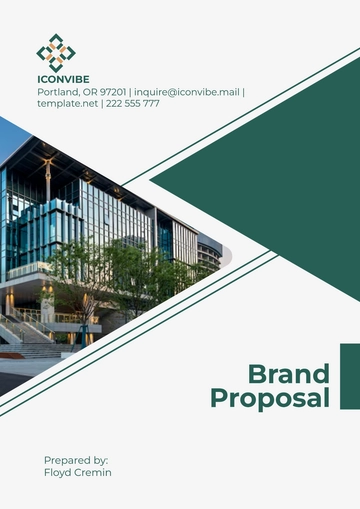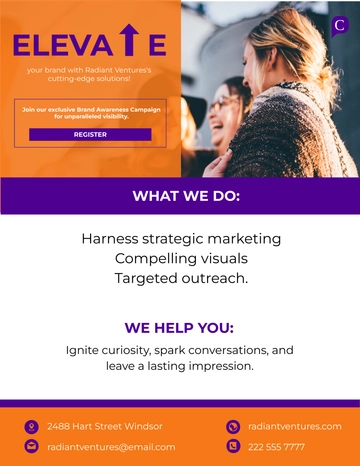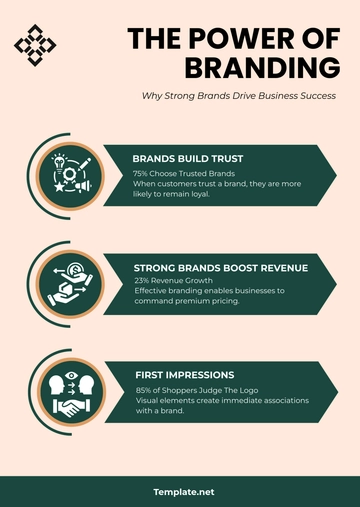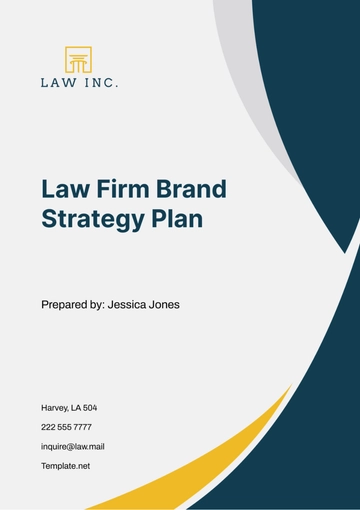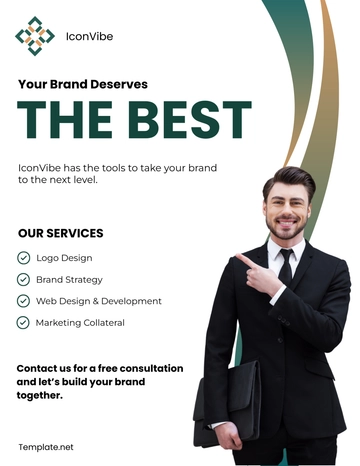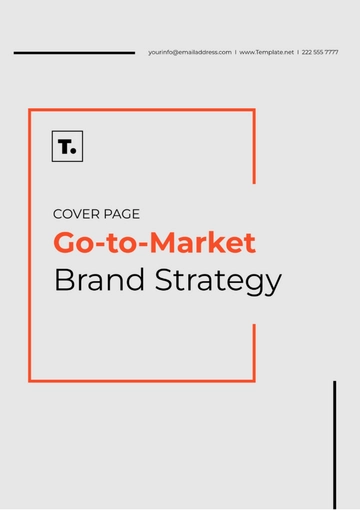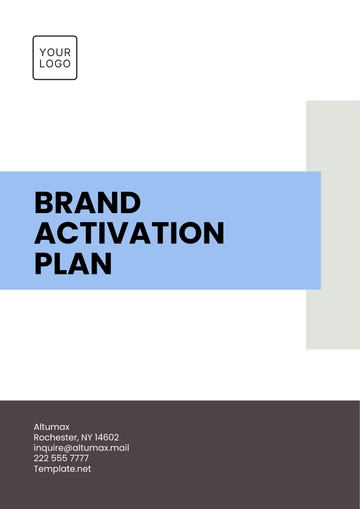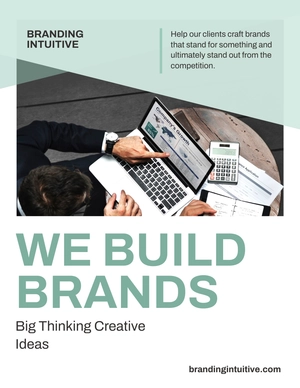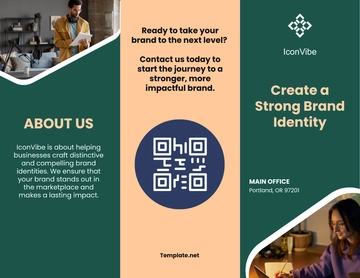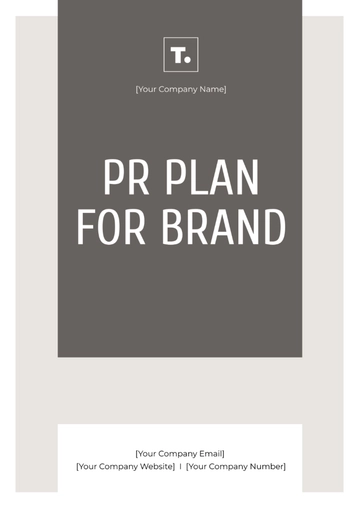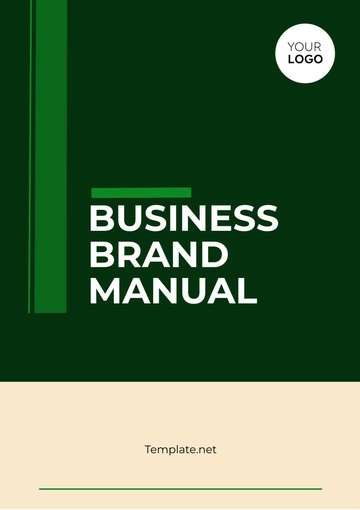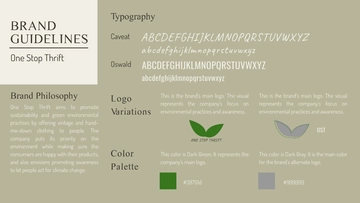Free Full Brand Advertising Standards & Guidelines
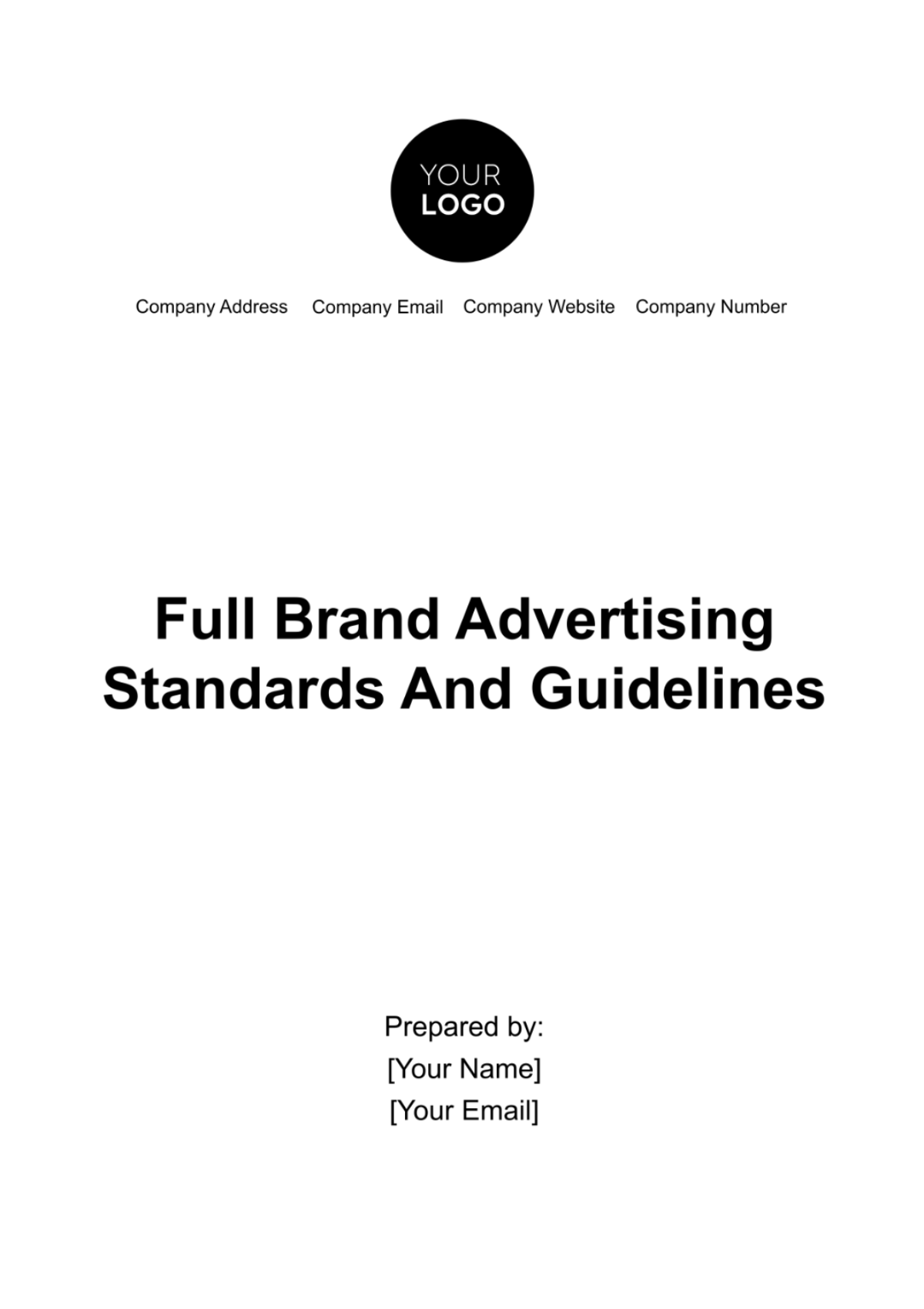
1. Introduction
Welcome to [Your Company Name]'s comprehensive Brand Advertising Standards & Guidelines. At [Your Company Name], we are committed to pushing the boundaries of innovation in technology while maintaining an unwavering dedication to integrity, excellence, and customer-centricity. As we continue to evolve and expand our presence in the tech industry, these guidelines serve as the foundational framework for all our advertising endeavors.
Our Brand Promise
[Your Company Name] is synonymous with cutting-edge technology solutions designed to simplify and elevate everyday experiences. Our brand promise rests on three pillars:
Innovation: We relentlessly pursue innovation, pioneering advancements that shape the future of technology.
Reliability: Our products are built on a foundation of reliability and durability, ensuring consistent performance and trustworthiness.
Simplicity: We strive to make complex technology accessible and user-friendly, focusing on simplicity without compromising functionality.
Purpose of the Guidelines
These Brand Advertising Standards & Guidelines are meticulously crafted to uphold and amplify the essence of [Your Company Name] in every advertising initiative. They serve as a compass, guiding our teams to communicate our brand identity, values, and offerings consistently across diverse advertising channels and touchpoints.
Core Elements Covered
Brand Identity: Defining the essence of [Your Company Name], including voice, visuals, and values that underpin our brand's persona.
Messaging Guidelines: Outlining principles to craft clear, compelling, and customer-centric messages that resonate with our audience.
Design and Visual Standards: Establishing visual guidelines to ensure cohesive and visually impactful advertising materials.
Usage of Brand Assets: Providing clarity on how to correctly and effectively use our brand assets, including logos, slogans, and imagery.
Compliance and Legal Requirements: Emphasizing adherence to legal and ethical standards in advertising practices.
Target Audience and Channels: Identifying our target audience and preferred advertising channels for effective outreach.
Measurement and Evaluation: Setting benchmarks and metrics to measure the success and impact of our advertising efforts.
Importance of Consistency
Consistency is key to reinforcing our brand identity and fostering trust among our audience. By adhering to these guidelines, we ensure a unified brand presence that resonates with our customers, partners, and stakeholders.
Conclusion
As stewards of the [Your Company Name] brand, it is incumbent upon each of us to embrace and implement these guidelines in our advertising initiatives. Together, let's uphold the integrity and excellence that define [Your Company Name]'s commitment to revolutionizing technology while enhancing the lives of our customers.
2. Brand Identity
The objectives of our advertising campaign are carefully designed to ensure that [Your Company Name] not only meets but exceeds its growth and engagement goals in the year 2050. Our brand identity serves as the cornerstone of our existence in the dynamic world of technology. It encapsulates who we are, what we stand for, and how we wish to be perceived by our audience.
2.1 Defining Our Brand Essence:
Our brand essence at [Your Company Name] revolves around three fundamental pillars:
Innovation: We are pioneers in technology, dedicated to pushing boundaries, and constantly evolving to bring cutting-edge solutions to our customers.
Reliability: Trust forms the bedrock of our relationship with customers. Our commitment to reliability ensures that our products consistently deliver on promises.
Simplicity: We believe in making the complex simple. Our user-centric approach aims to make sophisticated technology accessible and intuitive.
2.2 Elements of Our Brand Identity:
Voice & Tone: Our voice is conversational, knowledgeable, and forward-thinking, reflecting our commitment to innovation and customer engagement.
Visual Elements: The [Your Company Name] logo, with its sleek and modern design, represents our pursuit of progress. Our primary colors—blue, white, and silver—symbolize trust, clarity, and innovation.
Values & Purpose: Our values drive our decisions, and our purpose defines our existence. Integrity, excellence, and customer-centricity are at the core of everything we do.
3. Messaging Guidelines
In the vast landscape of advertising and communication, the art of messaging holds immense power. It serves as the bridge that connects [Your Company Name]'s innovative solutions with the needs and aspirations of our audience. This section within our Brand Advertising Standards & Guidelines lays the groundwork for crafting impactful, customer-centric messages that resonate, inspire, and drive engagement.
3.1. Clarity and Simplicity
Focused Messaging: Craft messages that directly convey the core benefits of our products without unnecessary information. Each message should have a clear purpose and focus.
Avoid Ambiguity: Use language that leaves no room for misinterpretation or confusion. Ambiguity can lead to misunderstandings and dilute our messaging impact.
Layman's Terms: Explain complex technical features in layman's terms, ensuring that even non-tech-savvy audiences can grasp the advantages.
Illustrative Examples: Use real-life examples or analogies to simplify intricate technical concepts, making them relatable and understandable.
3.2. Benefits-Focused Approach
Identify Pain Points: Understand the specific challenges our audience faces and highlight how our products directly address these issues.
Articulate Solutions: Clearly articulate how our technology serves as a solution, focusing on the practical benefits it brings to resolve these challenges.
Unique Selling Proposition (USP): Clearly define and communicate the unique advantages and features that set our products apart from competitors.
Tangible Impact: Emphasize the tangible outcomes and transformations our products enable, illustrating the value they bring to users' lives or businesses.
4. Design and Visual Standards
This section delineates the guidelines that govern our design choices, encompassing layout, imagery, typography, color palettes, and accessibility. These standards are not limitations but frameworks that empower our teams to create visually compelling, accessible, and consistent communications.
4.1 Layout and Presentation:
Minimalist Design: Embrace a minimalist approach that focuses on simplicity and clarity in layout and design across all communication materials.
Consistent Branding Elements: Ensure consistent placement of logos, taglines, and other brand elements to reinforce brand recognition.
4.2 Imagery Usage:
High-Quality Visuals: Utilize high-resolution images and graphics that align with our brand's aesthetics and evoke a sense of innovation and reliability.
Relevance to Audience: Ensure imagery resonates with our target audience by depicting scenarios that reflect their aspirations or challenges.
4.3 Typography Guidelines:
Font Selection: Maintain consistency in font usage across different platforms—using readable and modern fonts like Arial for digital and Lato for print materials.
Hierarchy and Readability: Establish clear hierarchy through font sizes and styles to guide the audience's attention and ensure readability.
4.4 Color Palette:
Primary Colors: Reinforce our brand identity by consistently using our primary colors—blue, white, and silver—in all visual elements and designs.
Accents and Contrast: Implement contrasting colors strategically to draw attention to key messages or elements without overwhelming the viewer.
5. Usage of Brand Assets
Our brand assets—such as logos, slogans, and visual elements—are the visual representation of our company's identity. This section outlines the principles and guidelines governing the appropriate and effective utilization of these assets to maintain consistency and reinforce our brand image across all communication channels.
5.1 Logo Usage:
Minimum clear space around the logo should be equivalent to half the height of the logo, ensuring it stands out and isn't crowded by other elements.
Specify different sizes for digital, print, and other applications to maintain visual balance and readability.
Provide full-color, monochrome, and reversed versions of the logo for different backgrounds and contexts.
Prohibit any alterations, distortions, or color manipulations to maintain brand integrity.
5.2 Slogan Implementation:
The slogan "Innovating Tomorrow, Today" should always appear alongside the logo, aligned horizontally or vertically, depending on space constraints.
Specify its usage primarily in marketing collateral and digital platforms for maximum impact.
Use a legible font size, ensuring the slogan is readable even in smaller applications.
Maintain consistent font styles and proportions across various designs and materials.
6. Compliance and Legal Requirements
In a dynamic regulatory landscape, adherence to legal and ethical standards is paramount. This section outlines the guidelines and obligations necessary to ensure that our advertising practices meet all legal requirements while upholding ethical standards and integrity.
6.1 Regulatory Adherence:
Local and International Laws: Ensure all advertising practices comply with the regulations governing advertising in the regions where [Your Company Name] operates.
Data Privacy Laws: Abide by data protection laws, ensuring the lawful collection, storage, and usage of customer data in advertising campaigns.
6.2 Ethical Standards:
Truthfulness and Accuracy: Avoid misleading or false claims in advertisements, ensuring that all information presented is accurate and verifiable.
Respect for Consumers: Uphold respect for consumers by avoiding offensive, discriminatory, or deceptive advertising practices.
6.3 Intellectual Property Rights:
Trademark Usage: Respect the trademarks and intellectual property rights of others, ensuring that our advertising materials do not infringe upon any third-party rights.
Originality and Attribution: Ensure that all content used in advertisements is original or appropriately attributed to its source.
6.4 Transparency in Advertising:
Clear Disclosures: Provide clear and conspicuous disclosures, especially for sponsored content or advertising messages, to prevent confusion or deception.
Terms and Conditions: Ensure that any terms and conditions associated with promotions or offers are clearly communicated and easily accessible to consumers.
7. Target Audience and Channels
Understanding our audience and effectively reaching them through appropriate channels are foundational elements of successful communication strategies. This section outlines the principles and strategies for identifying our target audience and selecting the most effective communication channels to engage with them.
7.1 Audience Segmentation
Demographic Analysis | Details |
Age Range | Identify specific age groups within our target audience to tailor messaging that resonates with each segment's preferences and needs. |
Income and Education Level | Understand the income and education levels of our audience to create content that aligns with their lifestyle and knowledge base. |
Psychographic Profiling | Details |
Lifestyle Preferences | Explore hobbies, interests, and activities to understand the lifestyle choices and personalize messaging to appeal to these preferences. |
Values and Beliefs | Dive into the values and beliefs held by our audience to ensure that our messaging aligns with their core principles. |
8. Measurement and Evaluation
8.1 Define Key Performance Indicators (KPIs):
Engagement Metrics: Track metrics such as clicks, likes, shares, comments, and time spent to measure audience engagement with our content.
Conversion Rates: Measure the percentage of users who take desired actions (e.g., purchases, sign-ups) after interacting with our messaging.
8.2 Data Analytics:
Website and Social Media Analytics: Use tools like Google Analytics, Facebook Insights, or LinkedIn Analytics to monitor website traffic and social media performance.
Customer Relationship Management (CRM) Data: Analyze CRM data to connect marketing efforts with customer behavior and preferences.
8.3 Surveys and Feedback:
User Feedback: Gather feedback through surveys or feedback forms to assess audience sentiment, satisfaction, and perception of our messaging.
Focus Groups or Interviews: Conduct qualitative research to delve deeper into audience perceptions and attitudes toward our messaging.
8.4 A/B Testing:
Content Variation Testing: Experiment with different versions of messaging to determine which performs better in terms of engagement or conversion rates.
Channel Experimentation: Test different communication channels to identify the most effective ones for reaching our target audience.
8.5 Continuous Improvement:
Regular Reporting: Establish a reporting schedule to review KPIs regularly and track progress against predefined benchmarks.
Iterative Strategy: Use insights gained from evaluation to refine messaging strategies, adapting based on what works best for our audience.
9. Conclusion
By understanding our audience, leveraging appropriate channels, and measuring our impact, we continuously refine and optimize our communication efforts. This commitment to excellence in messaging empowers us to authentically connect with our audience, build trust, and drive meaningful engagement, ultimately propelling [Your Company Name]'s mission of innovation and reliability forward.
Prepared By: [Your Name]
Date: [Date]
For further details, please contact [Your Personal Email] or visit [Your Company Website].
- 100% Customizable, free editor
- Access 1 Million+ Templates, photo’s & graphics
- Download or share as a template
- Click and replace photos, graphics, text, backgrounds
- Resize, crop, AI write & more
- Access advanced editor
Explore the Full Brand Advertising Standards & Guidelines Template on Template.net. This comprehensive resource offers editable and customizable standards to ensure consistent brand representation across all channels. With our intuitive Ai Editor Tool, tailor the guidelines to your brand's unique identity effortlessly, ensuring cohesive and impactful advertising campaigns.

